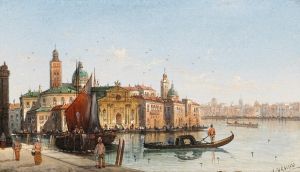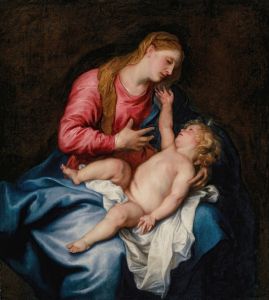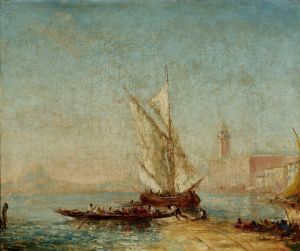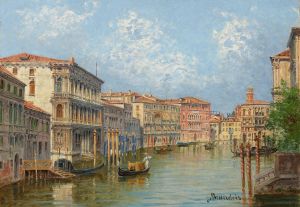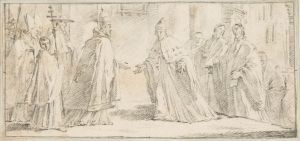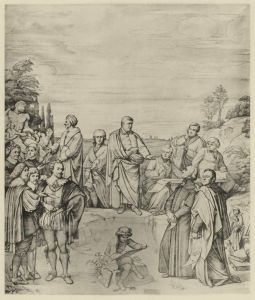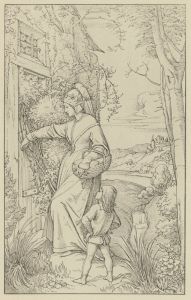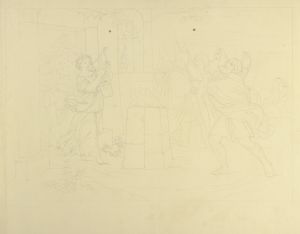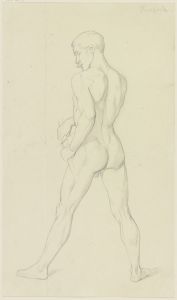
Shylock von den Strassenjungen verspottet
A hand-painted replica of Eduard von Steinle’s masterpiece Shylock von den Strassenjungen verspottet, meticulously crafted by professional artists to capture the true essence of the original. Each piece is created with museum-quality canvas and rare mineral pigments, carefully painted by experienced artists with delicate brushstrokes and rich, layered colors to perfectly recreate the texture of the original artwork. Unlike machine-printed reproductions, this hand-painted version brings the painting to life, infused with the artist’s emotions and skill in every stroke. Whether for personal collection or home decoration, it instantly elevates the artistic atmosphere of any space.
Eduard von Steinle was a notable 19th-century German painter, associated with the Nazarene movement, which sought to revive honesty and spirituality in Christian art. One of his works, "Shylock von den Strassenjungen verspottet" (Shylock mocked by the street boys), is a significant piece that reflects the artist's interest in literary themes and his skill in narrative painting.
The painting depicts a scene from William Shakespeare's play "The Merchant of Venice." Shylock, a Jewish moneylender, is one of the central characters in the play, and his portrayal has been the subject of much analysis and interpretation over the centuries. In Steinle's work, Shylock is shown being mocked by a group of street boys, capturing a moment that emphasizes his isolation and the prejudice he faces.
Eduard von Steinle was born in Vienna in 1810 and became a prominent figure in the German Romantic movement. He was deeply influenced by the Nazarene artists, who were known for their detailed and idealized representations of religious and historical subjects. Steinle's works often reflect a blend of Romanticism and a meticulous approach to historical accuracy.
"Shylock von den Strassenjungen verspottet" is notable for its composition and the emotional depth it conveys. Steinle's use of light and shadow, as well as his attention to the expressions and body language of the figures, creates a powerful narrative moment. The painting not only illustrates a scene from Shakespeare's play but also comments on the broader themes of intolerance and human suffering.
The painting is part of Steinle's broader body of work that often explored themes from literature and history. His ability to capture the essence of a story and convey complex emotions through his art made him a respected figure in the 19th-century art world. Steinle's works are characterized by their clarity, precision, and the moral and spiritual messages they often convey.
"Shylock von den Strassenjungen verspottet" is an example of how Steinle used his art to engage with literary sources and bring them to life in a visual medium. The painting serves as a reminder of the enduring power of Shakespeare's characters and the universal themes they embody. Through Steinle's interpretation, viewers are invited to reflect on the nature of prejudice and the impact it has on individuals and society.
Eduard von Steinle continued to produce significant works throughout his career, contributing to the cultural and artistic heritage of the 19th century. His paintings remain appreciated for their technical skill and the depth of their narrative content. "Shylock von den Strassenjungen verspottet" stands as a testament to Steinle's ability to merge literary inspiration with artistic expression, creating works that resonate with audiences both in his time and today.







